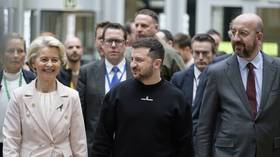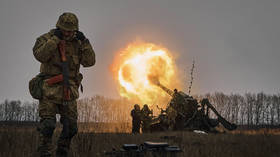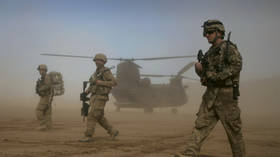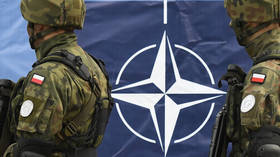Ilya Kramnik: Here's why NATO isn't able to help Ukraine win
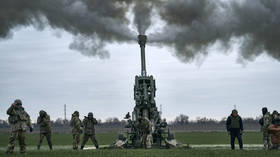
More than 18 months into the conflict between Russia and Ukraine, NATO military aid to Kiev remains a constituent part of the war. This factor seeps into public consciousness, influences the political perception of the conflict, and affects the situation on the battlefield, whichever side of the hostilities people find themselves on. All these aspects are important in their own right, and each will influence the course of the conflict and its eventual outcome. But how long will NATO be able to provide military assistance to Ukraine?
Gloomy prospects for Ukraine
NATO began providing assistance to Kiev as soon as the conflict started in 2022, and the volume of aid increased throughout the course of last year. This assistance largely influenced the attitude of ordinary Ukrainians toward the hostilities and reinforced the myth of a speedy and inevitable “victory” for Kiev, certain to happen because “the whole world supports us.”
The same attitude prevailed in the area of public policy – the aid provided by a particular country indicated whose side it was on: Ukraine’s “allies” in NATO (primarily the US) provided direct military assistance, while “neutral” countries offered only financial and organizational assistance, or no help at all.
On the battlefield, NATO aid is fully responsible for the combat capabilities of the Armed Forces of Ukraine (UAF). If this aid is discontinued, the Ukrainian army will lose its combat capability within a few weeks, or as soon as the current ammunition stocks run out.
How likely is it that NATO assistance will continue? To answer this question, we need to understand the stocks of weapons and military equipment among members of the bloc – and it is important to note that many are lacking in this regard.
The US stands out for its available resources, and its weapons arsenal is larger than that of all other NATO countries. However, even though Washington has provided Kiev with large quantities of weapons and ammunition, it is still only supplying a relatively small share of what it has. Other countries with large weapons arsenals are Greece and Turkey. However, these stocks exist because of age-old tensions between the two countries, which limits their possible transfer to Ukraine.
In most other NATO countries, military stocks are relatively small and are intended mainly for export, particularly when the buyer is interested in used equipment which can be put to use in its existing condition or modernized.
These factors impose a limit on the volume of aid allocated to Ukraine, and are why military assistance to Kiev, which started in 2022 and peaked in early 2023, has begun to decline. It also means that unless the US starts handing over reserve military equipment, or, together with other allies, finds alternative suppliers, assistance will be cut further.
Why have things turned out this way?
NATO could have avoided this situation by increasing the production of weapons and military equipment back in 2022, and deploying additional production facilities. In this case, some progress would already have been visible by the winter of 2023-24.
However, the bloc did not have a unified vision regarding additional weapons production, which severely complicated the decision-making process. Not a single NATO politician was ready to guarantee arms manufacturing companies a steady, large-scale demand for weapons once the conflict in Ukraine ended. Moreover, even though the scale of the conflict is significant, it is in some cases insufficient to ensure the necessary demand for new weapons. Finally, it should be noted that a number of Western politicians and military leaders believed that the current military aid to Ukraine would suffice to meet the goals of 2023 – obviously, this was due to false conclusions made as a result of the battles in the Kharkov and Kherson regions in the summer-fall of 2022.
The result of these misguided conclusions has been twofold. On the one hand, Ukraine did not receive the necessary equipment and weapons to break through Russia’s well-prepared defensive lines. Indeed, we can posit that no army within NATO is currently prepared for this, and that perhaps this lack of practical and theoretical readiness prevented the bloc from realistically assessing the capabilities of Russian troops and their defensive positions.
As a result, the Ukrainian counteroffensive was launched with a clear lack of artillery, tanks, and particularly engineering equipment, despite the fact that NATO Supreme Allied Commander General Christopher Cavoli declared that Ukrainian troops were fully equipped.
On the other hand, NATO made a number of decisions and signed contracts to equip Ukrainian troops on a long-term basis. This included the transfer of missile defense systems and other weapons which, due to insufficient production capacities, will not be available for several years. Like the decision to transfer fighter jets – which hasn’t yet been publicly finalized in terms of volume and timing – these contracts were assessed by numerous experts as “post-war,” i.e. intended to compensate after the conflict for the losses sustained.
However, the unsuccessful course of the Ukrainian counteroffensive launched in July makes the full-scale implementation of these contracts and intentions uncertain. Their prospects will be even more doubtful in the event of a successful Russian offensive in the coming fall or winter.
The upcoming US elections give rise to more doubts concerning NATO’s assistance to Ukraine in the coming year, considering that the subject of military aid will come under fire from the Republicans. There is no need to exaggerate the “pro-Russian” aspect of this criticism, since some Republican politicians treat Russia pragmatically at best – but little will prevent them from publically pointing out every mistake of the Biden administration, exclusively in their own interests.
What does it all mean?
Will NATO be able to significantly increase aid to Ukraine in the near future? No. Military production is an inertial industry, and even if the decision to considerably increase the production of weapons were made tomorrow, it would take up to two years to yield any results. Considering the unfavorable public image of Ukraine’s unsuccessful counteroffensive, it may take even longer.
Interestingly, Soviet-made military equipment, or Eastern European equipment produced under a Soviet license, has turned out to be the most effective for Ukraine’s army. Soviet tanks, infantry fighting vehicles, and other equipment that does not require special training, maintenance, infrastructure, and ammunition can be put into battle immediately, and its combat readiness level is higher compared to Western models that need to be incorporated into the new environment.
If, back in 2022, NATO had made use of Eastern European military-industrial cooperation, which allows the production of T-72 tanks, BMP-2 infantry fighting vehicles, a number of 122-152 mm artillery systems, and some other types of weapons and military equipment, this decision could have had consequences for the course of the conflict. However, this never happened, and – given the fact that the Polish defense industry is now shifting to the licensed production of South Korean-designed equipment – will likely not happen in the future. This means that for Ukraine, issues such as the insufficient supply of military equipment, the vastly different types of weapons, the shortage of ammunition, and the resulting problems with the management of troops will all remain unsolved. In such circumstances, the success of a new counteroffensive is hardly possible.
Generally, the ball – or in other words, the military-technical initiative in the conflict – is now in Russia’s court, and it depends on Russia how well this opportunity is used. It is quite likely that the initiative to transfer Western fighter jets to Ukraine will be quietly abandoned, since the AFU will no longer be able to use them. Russia knows full well that this is the case. In theory, this state of affairs should increase the willingness of the US to negotiate, although the upcoming election season will greatly complicate any potential talks.
So, unless something extraordinary happens, the West will most likely continue to support the Ukrainian armed forces to the extent necessary to continue resistance. This means Ukraine will not have enough equipment and weapons to launch a large-scale new counteroffensive unless the US decides to share its weapons arsenals. Such a decision, however, would go against US practice in recent years as well as its strategic planning, which sees China as the main rival on which to focus its financial, military, and technological resources.
